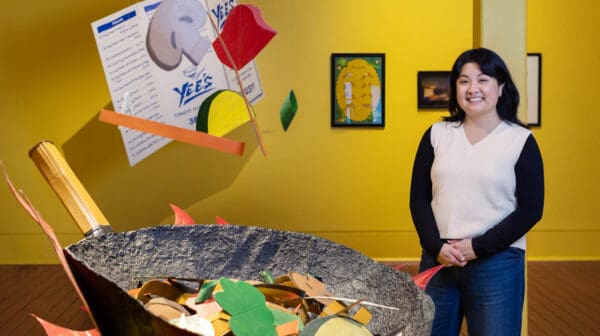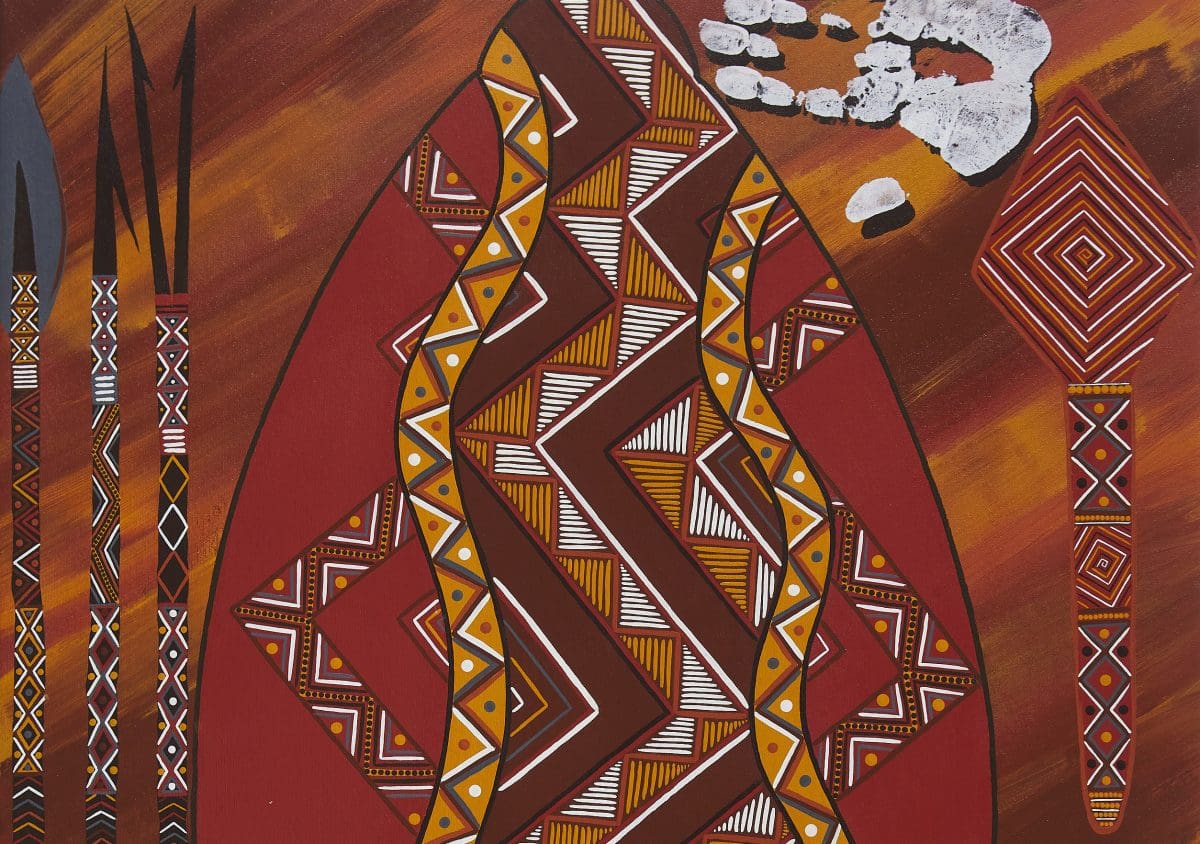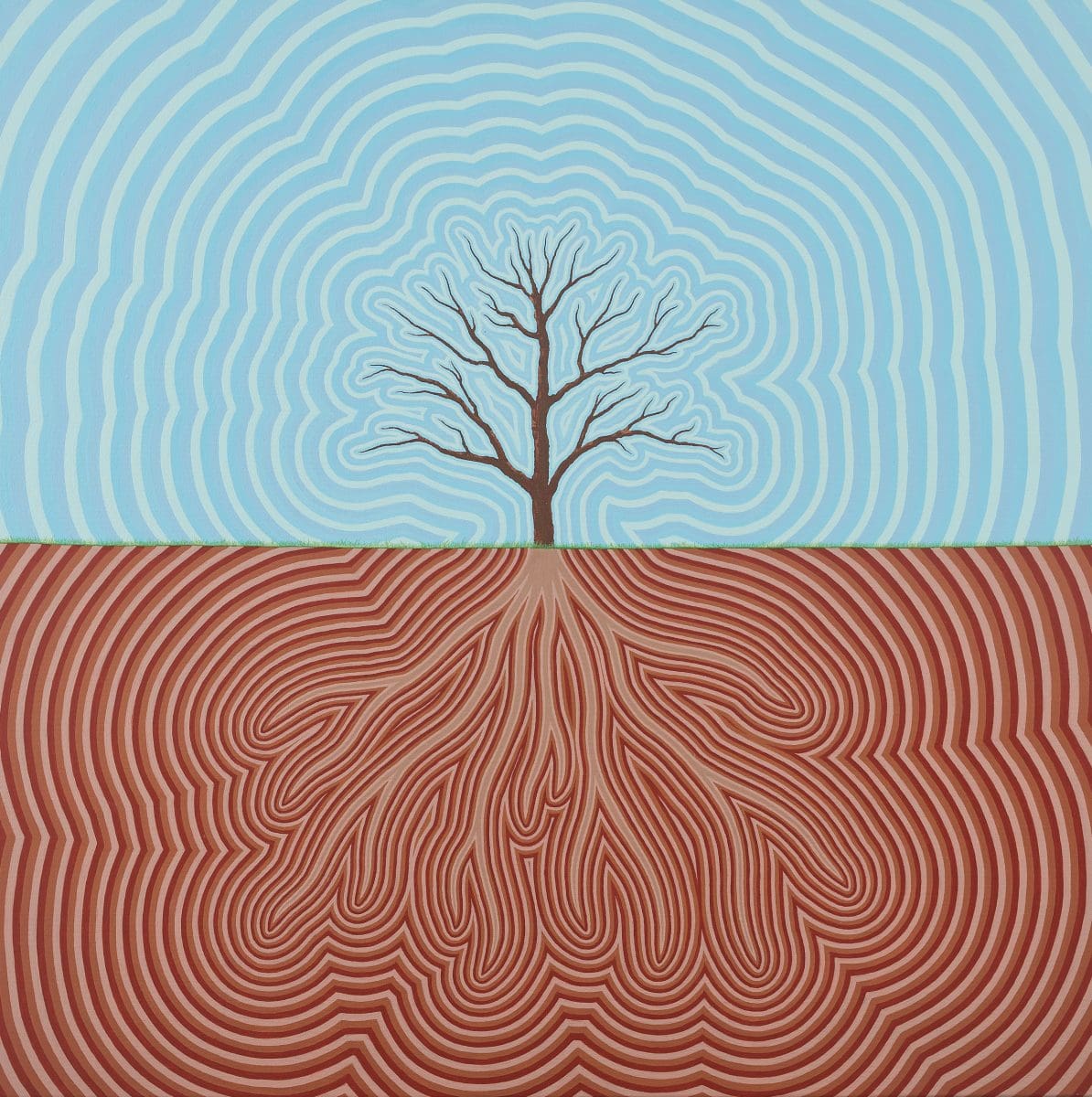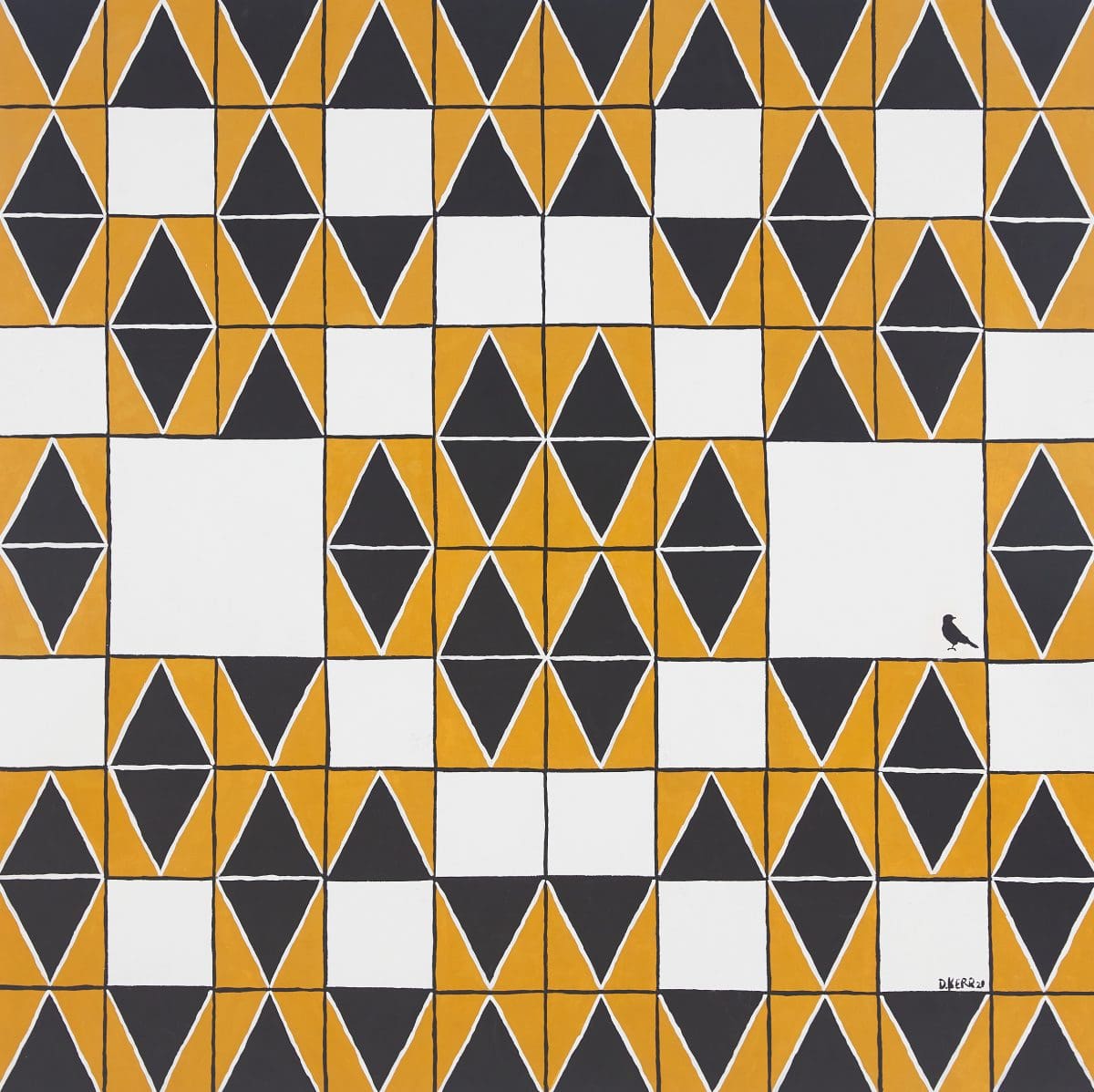Confined 13 shows the valuable ways art may change lives. Each of the 400 works, ranging from paintings to three-dimensional pieces like painted surfboards and boxing gloves, in this annual exhibition were created by First Nations artists—either currently in or recently released from Victorian prisons. It’s a tribute to how artistic expression strengthens connection to a person’s story, culture and heritage, while giving further artistic possibilities.
For Chris Austin, a Keerraaywoorrong man from the Gunditjmara Nation of south-western Victoria, art freed him from a 37-year cycle of incarceration. He remembers that when he was in prison, “[Art] was our escape from jail, it took us out of our cells and over the wall into a happier place. Then Torch came in and told us that they are there, to supply us paint and anything cultural from your mob and Country.”
The Torch delivers Victoria’s Indigenous Arts in Prisons and Community Program. Working with people incarcerated since 2011, it uses art to address the over-representation of Indigenous Australians in prison. Kent Morris, a Barkindji man and artist, heads the program and describes prison as “a cultural vacuum for First Nations people”.
The Torch offers participants an opportunity to connect to culture, realise their potential—and to change their circumstances. Morris says, “The mass incarceration of First Nations Australians is a national disgrace. Organisations such as The Torch show that Indigenous-led and delivered solutions to some of the ongoing issues caused by systemic over-incarceration can be addressed successfully.”
Within this program, participants are regarded as artists rather than offenders and all art sales are returned in full to the artists, with more than one million dollars delivered back to artists in 2021. Morris explains the impact of this: “Participants are able to provide approved support to their families on the outside, increasing stability and helping to alleviate ongoing socio-economic disadvantage.”
For Austin, participating in Confined exhibitions in recent years means that, “We could exhibit and show the world culture, stories and talent. For us it was a funny feeling inside, a bit excited, a bit scared to see [if] people actually thought our art was any good. The feedback from the exhibition was some of the best news our boys have ever heard.”
Now a mentor for The Torch, Austin explains how participants “start to find out where they are from by learning and painting stories of their culture and Country. This changes the whole way of thinking, to take a blank piece of canvas and a thought to create something beautiful and cultural that tells and shares their story with the viewers. For most, it is the first time they have done something to make themselves and family proud.” While Austin’s experience speaks to men in prison, The Torch equally assists First Nations women.
Melissa Bell is a Gunditjmara/Yorta Yorta artist from Cummeragunja. After joining the Torch program in 2016 she says, “I was a bit lost and art helped me find my way back. It also helped me to build relationships with the other Koorie girls who were in [prison] too…What makes me proud to be a part of the Confined exhibitions is that I get to put my artwork out there and connect to other Aboriginal people while sharing my stories.” Melissa’s work often features the long-necked turtle, her totem, depicted with colour and pattern with strong abstract qualities.
The art—which spans painting, woven baskets, boomerangs, shields and ceramic homewares among many other forms—may be purchased online or at the exhibition in Melbourne’s Glen Eira City Council Gallery. A breadth of style, subject matter, colour and motifs exhibit a range of Indigenous narratives, many from Victoria.
While strong sales are already evident, what is most affirming is that, for Torch participants, the rate of reincarceration is 11% in contrast to 53% for other Indigenous prisoners in Victoria. Morris believes that this arises from art’s innate qualities to address and heal trauma. He explains that in the program, “Artists feel valued, and have stories and experiences that can be shared. It works toward a commitment to change.”
Bell asserts, “Being a part of The Torch has kept me out of prison—and saved my life.”
Confined 13
(Presented by The Torch)
Glen Eira Town Hall Gallery
5 May—5 June













